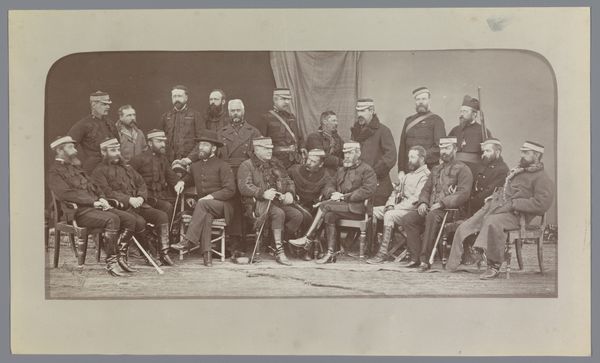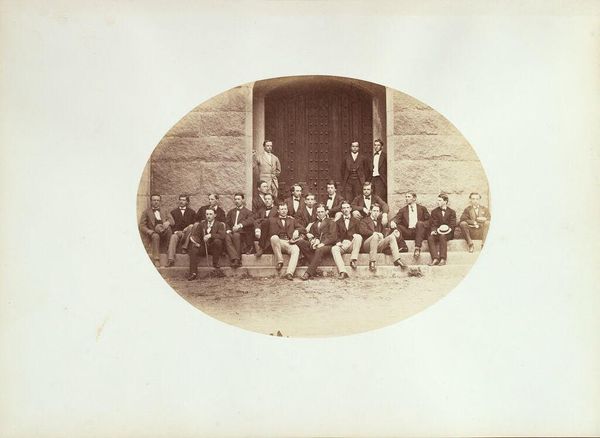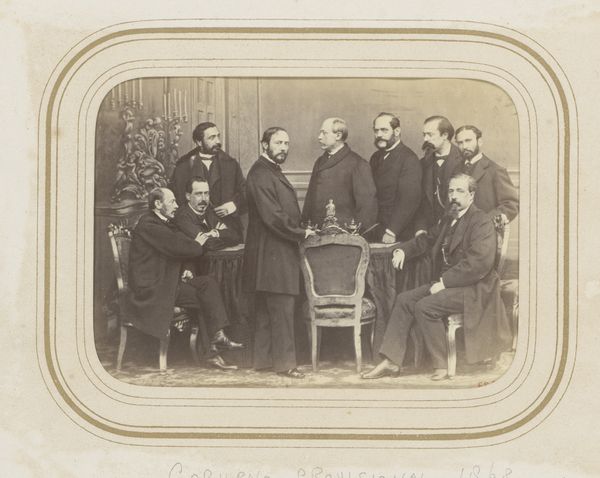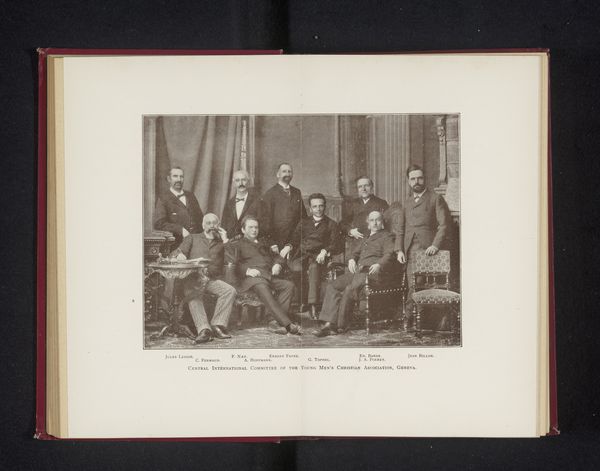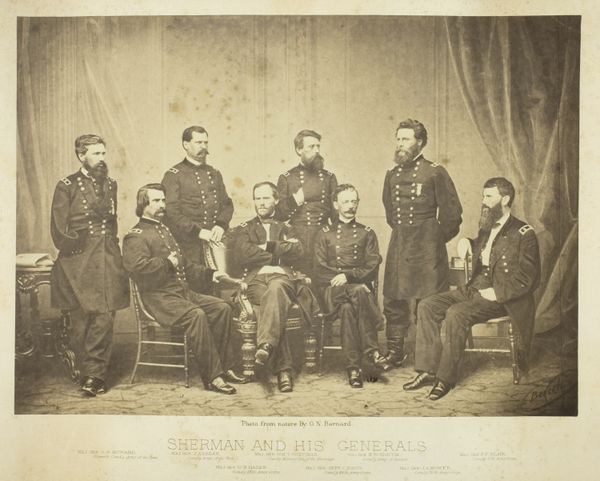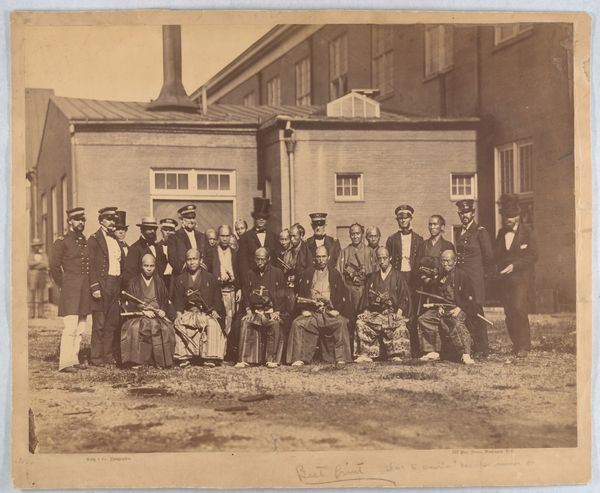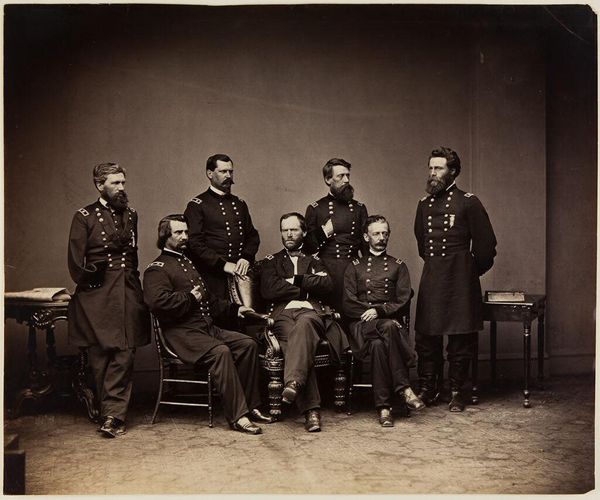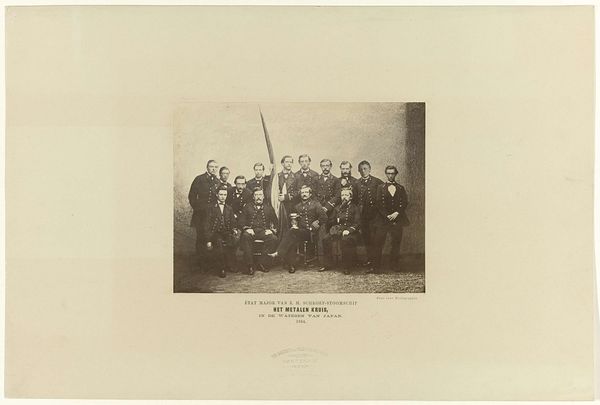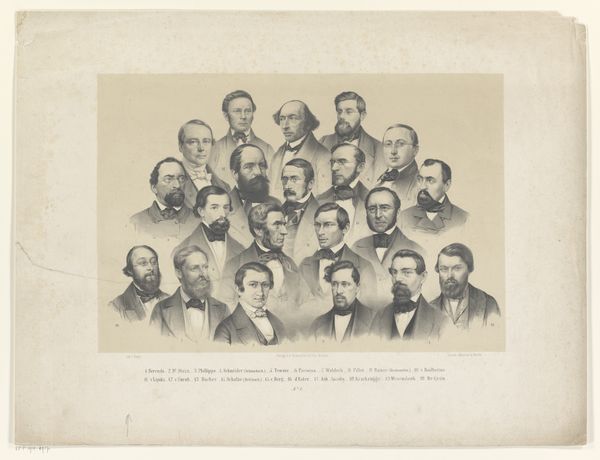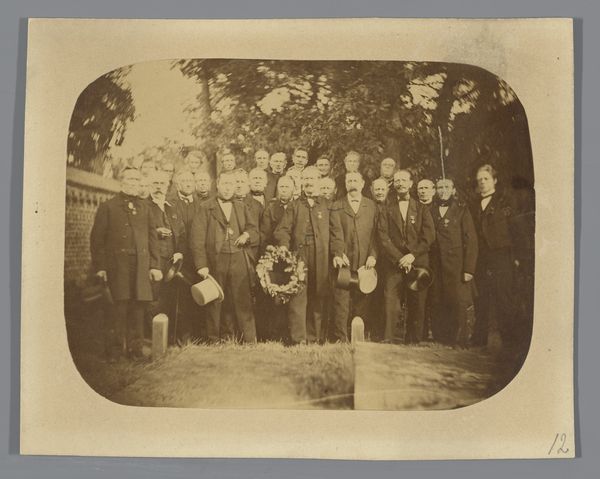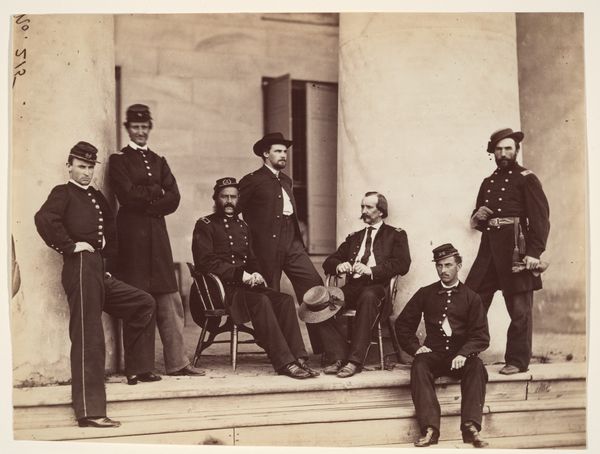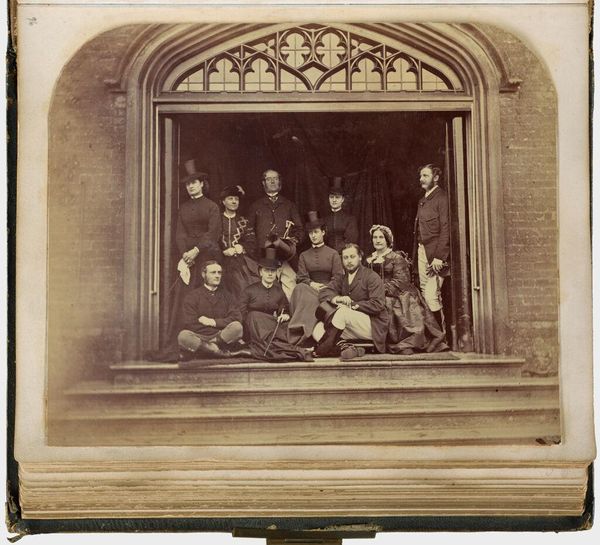![[Members of the New York Sanitary Commission] by Mathew B. Brady](/_next/image?url=https%3A%2F%2Fd2w8kbdekdi1gv.cloudfront.net%2FeyJidWNrZXQiOiAiYXJ0ZXJhLWltYWdlcy1idWNrZXQiLCAia2V5IjogImFydHdvcmtzL2QxNzBiOWJmLTI4NTQtNDRmZC05NzQ3LTBiZDMzOGRiMzhiYy9kMTcwYjliZi0yODU0LTQ0ZmQtOTc0Ny0wYmQzMzhkYjM4YmNfZnVsbC5qcGciLCAiZWRpdHMiOiB7InJlc2l6ZSI6IHsid2lkdGgiOiAxOTIwLCAiaGVpZ2h0IjogMTkyMCwgImZpdCI6ICJpbnNpZGUifX19&w=3840&q=75)
[Members of the New York Sanitary Commission] 1858 - 1862
0:00
0:00
photography, gelatin-silver-print
#
portrait
#
photography
#
group-portraits
#
gelatin-silver-print
#
history-painting
Dimensions: Image: 28.2 × 41.6 cm (11 1/8 × 16 3/8 in.) Mount: 45.7 × 55.8 cm (18 × 21 15/16 in.)
Copyright: Public Domain
Curator: This gelatin silver print, created by Mathew Brady between 1858 and 1862, is a group portrait titled "[Members of the New York Sanitary Commission]." It’s currently housed at the Metropolitan Museum of Art. Editor: My first impression is of a somber assembly. The muted tones and the men's dark suits lend an air of serious purpose. It’s interesting how the photographer has arranged them. Curator: Indeed. Consider the composition. Brady positions the subjects to convey hierarchy and interconnectedness. The standing figures, the seated ones slightly forward…it all suggests a network of power. The light too, serves to divide and unite these gentlemen, imbuing it all with semiotic weight. Editor: Absolutely. Looking closer, you begin to notice the material culture on display: the cut of the suits, the gleam of what appears to be name tags pinned to the lapels. And what was the work of the Sanitary Commission at this moment in time? To understand it’s not merely the capturing of men’s images here; it is an index of broader societal forces at play. What kind of labor went into producing that gelatin silver print? Curator: One could argue that by framing these members so deliberately, and by drawing parallels between the men who are elevated with bright exposure, while plunging others into deep contrast, we learn a deeper understanding of structuralism in action through an examination of how these visual elements uphold pre-conceived societal notions of control and hierarchy. Editor: I agree, and might further that observation by analyzing that deeper intention using a production lens; a history-painting executed in a novel and reproducible medium. Beyond aesthetics, how does this photograph serve as documentation and what type of social role did it play at the time of the commission? Curator: Well put. The success here relies on visual elements forming signs that help tell this story. What we discern is that this picture and moment can become one cohesive set of indicators about societal issues such as structure and labor division during a vital part of American history through formal and visual means. Editor: A powerful interplay of representation and reality, achieved with a combination of art, science, and industry. It brings us closer to understanding the complex ways material conditions and social forces shape our perception. Curator: It underscores the complex relationship between intention, method, and image. Thank you.
Comments
No comments
Be the first to comment and join the conversation on the ultimate creative platform.
